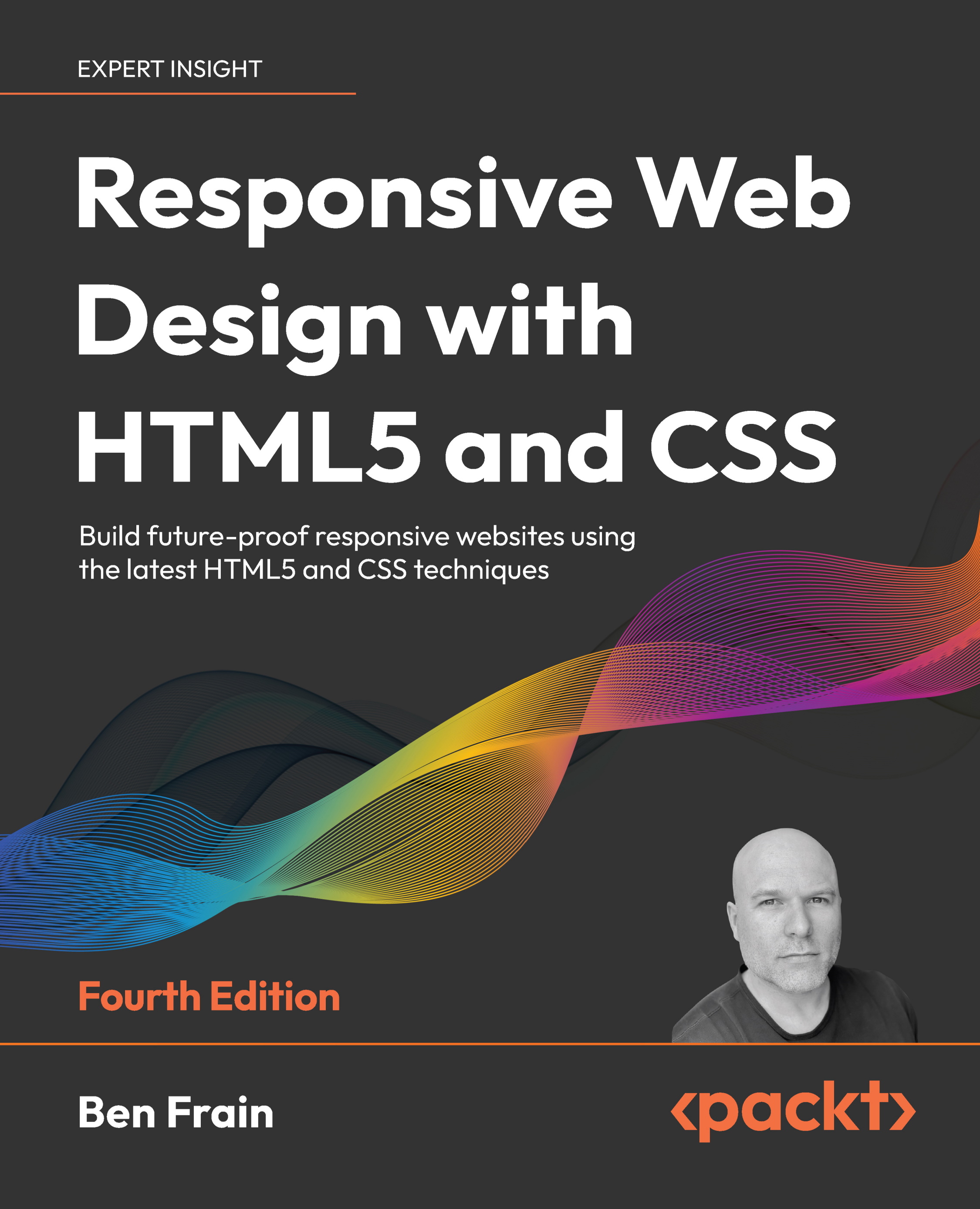What this book covers
Section I: The Fundamentals of Responsive Web Design
Chapter 1, The Essentials of Responsive Web Design, is a whistle-stop tour of the key ingredients in coding a responsive web design.
Chapter 2, Writing HTML Markup, covers all the semantic elements of HTML5, text-level semantics, and considerations of accessibility. We also cover how to insert media such as video into our pages and how to use the new dialog element.
Chapter 3, Media Queries and Container Queries, covers everything you need to know about CSS media queries: their capabilities, the syntax, and the various ways you can wield them. There is also an overview of container queries.
Chapter 4, Fluid Layout and Flexbox, covers how to convert designs into proportional layouts and provides a thorough exploration of Flexbox layouts.
Chapter 5, Layout with CSS Grid, is a deep dive into the two-dimensional layout system of CSS grid, with an explainer of how to make use of the new subgrid property.
Section II: Core Skills for Effective Front-End Web Development
Chapter 6, CSS Selectors, Typography, and More, gets us to grips with the endless possibilities of CSS selectors, feature queries, and web typography, including variable fonts, viewport relative units, and a whole lot more.
Chapter 7, CSS Color, covers the latest developments in expressing colors and color manipulation, including Lab/LCH, P3 color, and new color functions like color-contrast and color-mix.
Chapter 8, Stunning Aesthetics with CSS, covers CSS filters, box shadows, linear and radial gradients, multiple backgrounds, and how to target background images to high-resolution devices.
Chapter 9, Responsive Images, covers how to make use of new image formats like AVIF and WebP, and how to make the most relevant version of an image available to the browser.
Chapter 10, SVG, teaches us everything we need to use SVG graphics inside documents and as background images, as well as how to interact with them using JavaScript.
Chapter 11, Transitions, Transformations, and Animations, gets our CSS moving as we explore how to make interactions and animations using CSS.
Chapter 12, Custom Properties and CSS Functions, covers the many benefits of custom properties, then moves on to the utility of new CSS functions like min(), max(), and clamp().
Chapter 13, Forms, shows us how the latest HTML5 and CSS features make interacting with forms easier than ever before. Many HTML input types give you easy access to the relevant software keyboard on mobile devices.
Section III: Latest Platform Features and Parting Advice
Chapter 14, Cutting-Edge CSS Features, covers how to use CSS layers to better organize your code and how to write nested CSS, hopefully coming to your browser in the near future.
Chapter 15, Bonus Techniques and Parting Advice, explores the essential considerations before embarking on a responsive web design and also provides a few last-minute nuggets of wisdom to aid you in your responsive quest.
































































